Part 30: ManxomeBromide - SA GAZETTE ON AN HONEST TO GOD 64C
Special Easter PostIn a number of religious traditions, today is known as "Resurrection Sunday."
Let's celebrate it by bringing some old hardware back to life:
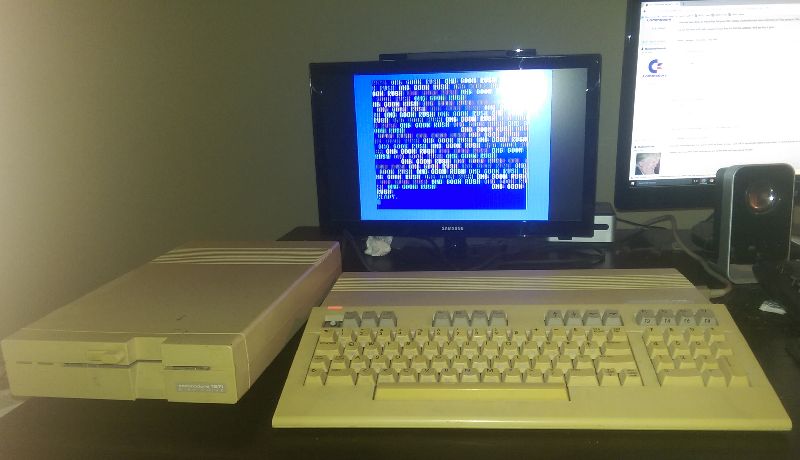
I've been maintaining a disk image for the thread. In this post, I'm going to try to get it onto one of these:
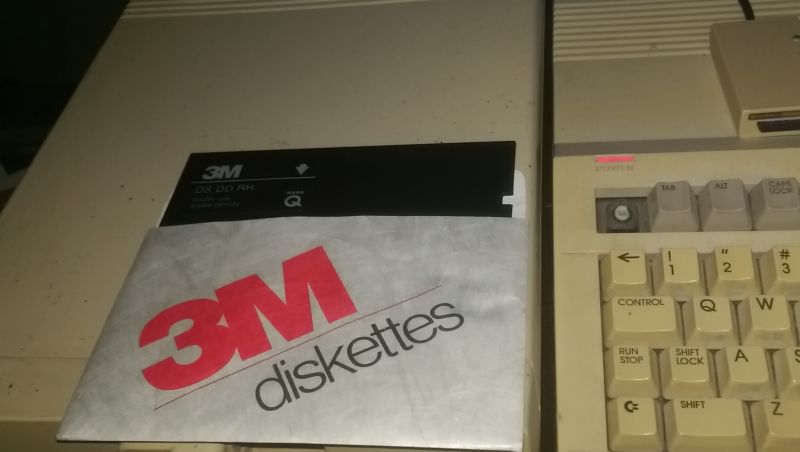
Most of the hardware you'll see in this post is scavenged, donated, or borrowed. Those of you who have helped me; I know you're out there reading this. Thanks.

You'll notice that's a fairly modern-looking monitor I have it hooked up to there. That's because that "monitor" is actually a television set, and the Commodores had TV output. Unfortunately, the TV output is incredibly terrible so text is often barely readable. If you're retrocomputing at home, don't do this. It ends only in tears and headaches.
Which I guess leads into my
 Important Disclaimer
Important Disclaimer 
I don't really know what I'm talking about here. I've tried to do my homework and provide what information I've found, but in a very real sense I'm still just some moron on the Internet toying with forces I only dimly comprehend. It is not only possible but likely that I seriously overestimate the utility, professionalism, or safety of the devices and retailers I discuss. The best I can say is that every device where I mention a manufacturer or model by name I know at least person who's done business with them and been happy with the results.
Getting stuff onto floppies: The Hardware Side
Preserving magnetic media is actually a serious deal; a lot of data lives only on magnetic disks and those don't survive very long. The 5.25" floppies that are used here actually do better than they later 3.5", hard plastic cousins, though. I've heard a couple of theories about this. Both are based on the observation that as magnetic media rely on, well, remagnetizing bits of magnetic material, the substance of the disks are actually prone to oxidation, which destroys or corrupts the data.
Which is to say, your data will literally rust off your floppy disks after a decade or so.
One theory is that the physical size of bits on the 5.25" floppies were larger—not only are they larger objects, they hold less information—and so rust damage is less likely to corrupt the disk. The other one is that you kept these disks in paper sleeves and stacked closely together, which means unlike the hard plastic cousins, fresh air can't get to the 5.25" disks' media, limiting damage over time. The hard shells let the newer disks breathe and so they take more and more damage over time.
That's not a risk for us here, though; I cracked open a fresh packet of floppy disks for this experiment, because it turns out Amazon just straight-up sells the things and adding them to my order got me free shipping.
But that's the target. What about the source? There are a bunch of things designed to do this. The gold standard seems to be KryoFlux's devices; these are intended for forensic and archival use and the serious digital antiquarians I know swear by them. There are cheaper but similar devices such as the ZoomFloppy.
But the Commodore systems were always designed to talk to "smart" devices. The old floppy drives had their own CPUs that were equally as powerful as the main system. File operations involved sending what were essentially DOS commands down the serial port to the disk drive, and then getting a pile of data back. Even at the time there were hard drives that "looked like" floppy drives to BASIC, where changing directories was vaguely equivalent to swapping disks. There are a variety of devices in the "uIEC" and "SD2IEC" families that are SD card readers that present themselves to the Commodore system as a hard drive of sorts and use the same connectors. They even daisy-chain properly with disk drives.
The finest device for hobbyists seems to be the 1541 Ultimate II—Commodore speedrunner videos seem to invariably use these, and they actually simulate the internal processor on a 1541 and can thus actually run stuff that relies on it. (A surprising number of commercial games used custom loading logic to speed things up; as a result, those games won't work on anything that doesn't simulate that. If you care about that, that takes hard drives and the SD Card-based systems out of consideration right away.)
Of these, the one I have access to for this post is an SD2IEC device, manufactured by The Future Was 8-Bit. That's the weakest of the solutions I've listed, which is kind of a bummer if you wanted to oh never mind look at this thing oh my god that is the cutest thing ever:

Anyway, we don't need anything fancy for this anyway, because all our programs are simple BASIC or single-file machine language programs designed to interact with nothing more complex than LOAD and SAVE.
Getting Stuff Onto Floppies: The Software Side
The SD2IEC is drive 8 here, which means the real floppy is drive 9. I'll be using CBM-Command to handle imaging and formatting and stuff. It's inspired by Norton Commander and it looks an awful lot like the DOSSHELL.EXE program that came with my old PC.
It's also open-source, and written in C. I guess C was the language of the future after all.
This was loaded onto the SD card, and when we start it up, we see a nice little loading screen that is marred slightly by my failure to disable my camera flash:
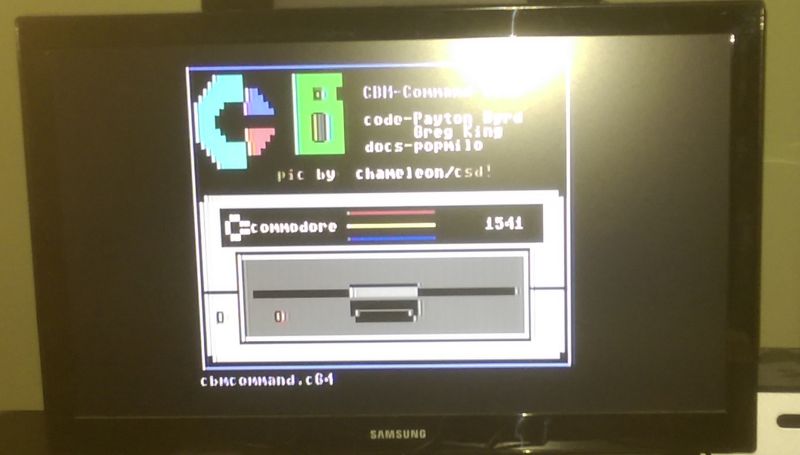
And soon we're looking at the main screen.
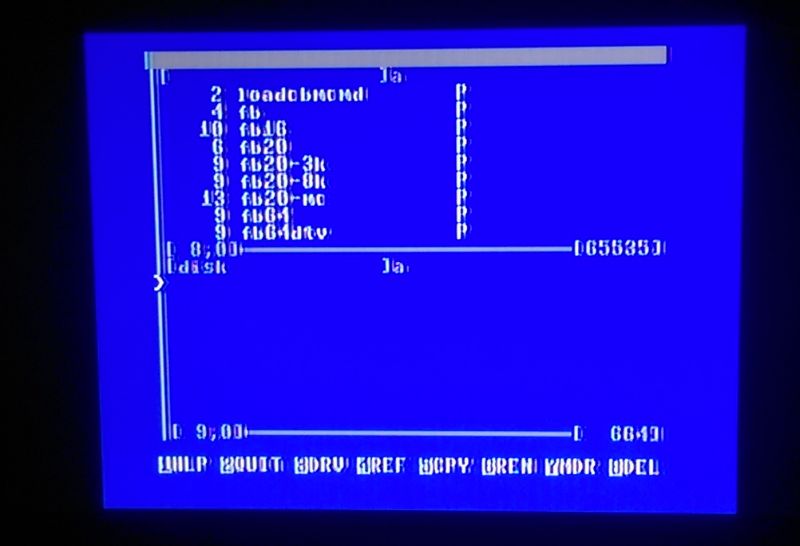
We select the sa_gazette.d64 image and give it the Write Image To Disk command. Note that the underscore is a left-arrow because early ASCIIs, of which Commodore's PETSCII was a variant, did not have the ^ or _ characters, and used up and left arrow there instead:

Meanwhile, in meatspace, both disks are chugging along, at a couple of hundred bytes per second.
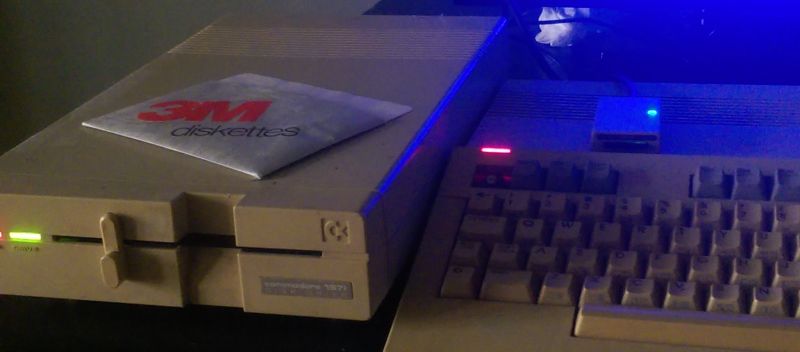
And after 10 minutes or so...
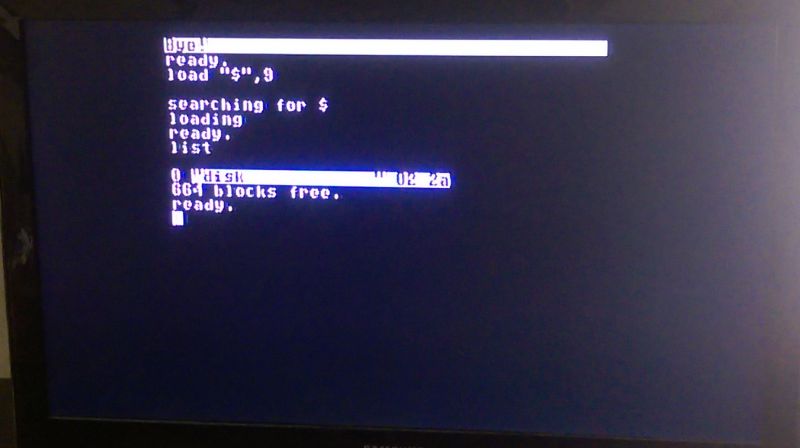
... nothing at all.
 Okay, fine, let's just copy a few files over manually, by LOADing from drive 8 and SAVEing to drive 9.
Okay, fine, let's just copy a few files over manually, by LOADing from drive 8 and SAVEing to drive 9.Actually Playing Some Games
 CLICK THIS IMAGE FOR VIDEO
CLICK THIS IMAGE FOR VIDEO 
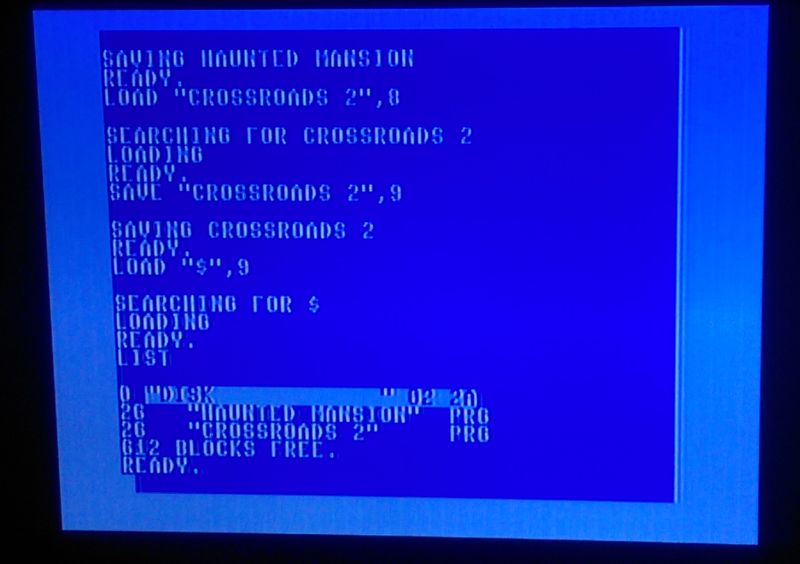
After recording this I then tried the reimaging again, but told it to reformat the disk first, and that half worked!
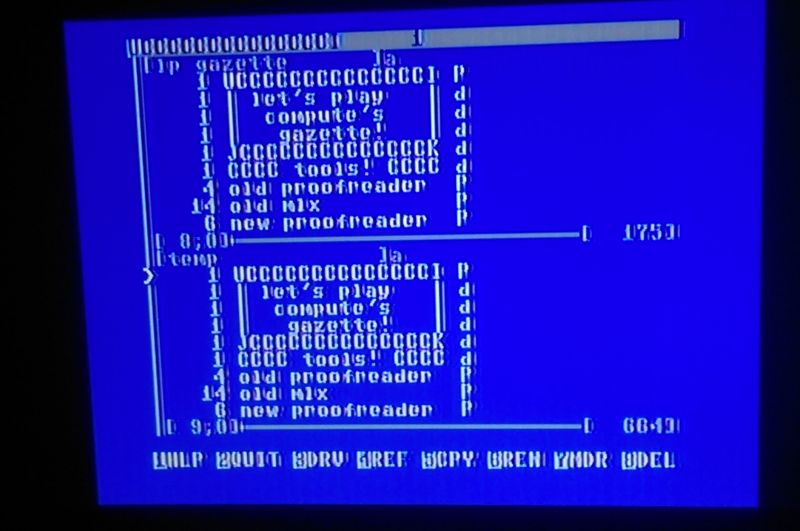
For some reason, though, it renamed the disk TEMP instead of LP GAZETTE like it should have. Maybe I'm just bad at CBM-Command.
But this does mean I can fire up Crossroads and do not-completely-embarassingly!
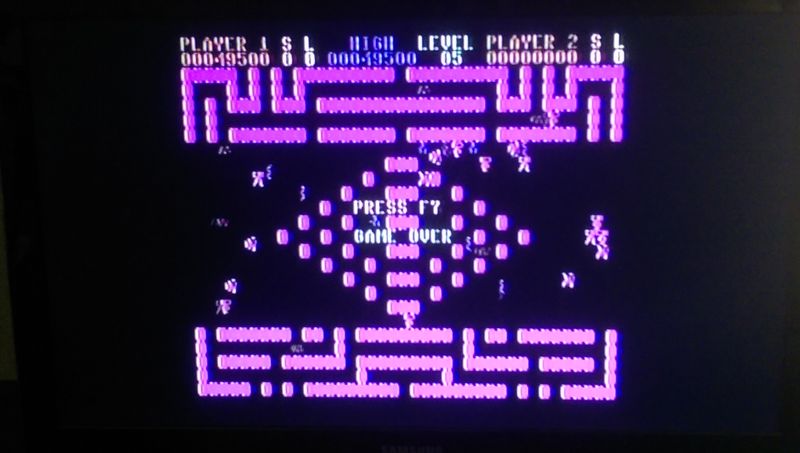
With the awful display setup I have here, you actually can't tell which direction Purple Rubberheads are facing. That ends about as well as you'd expect. Still, so close to 50k. I'll take it.